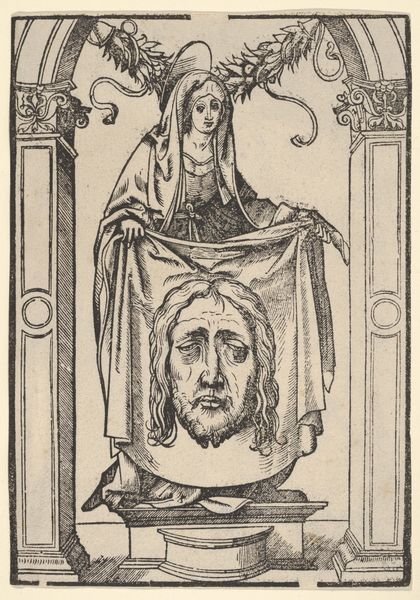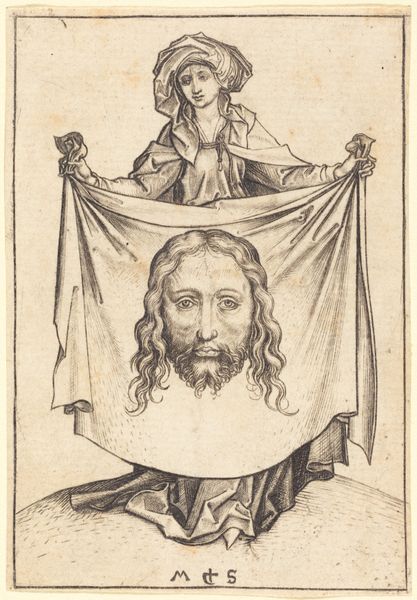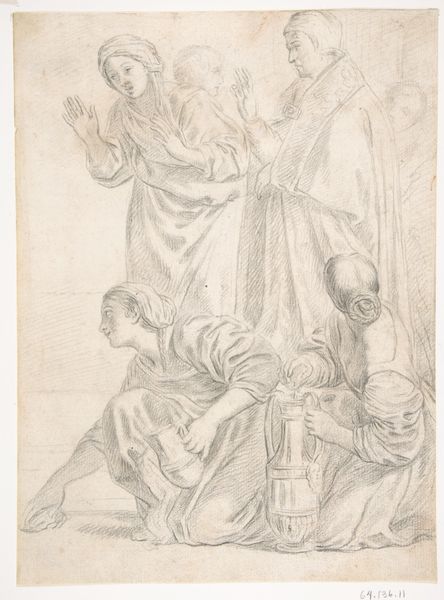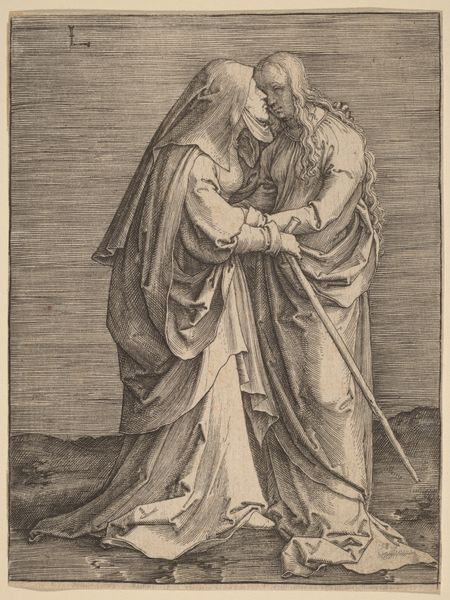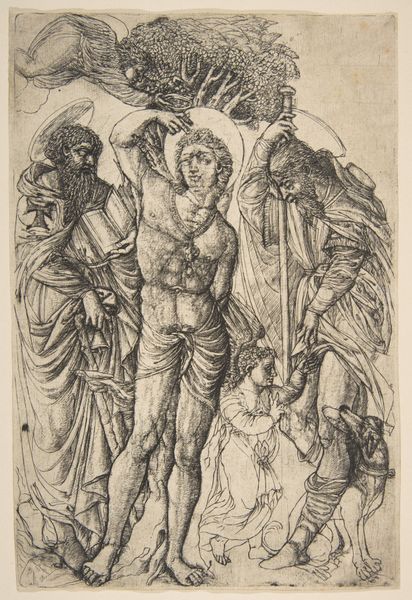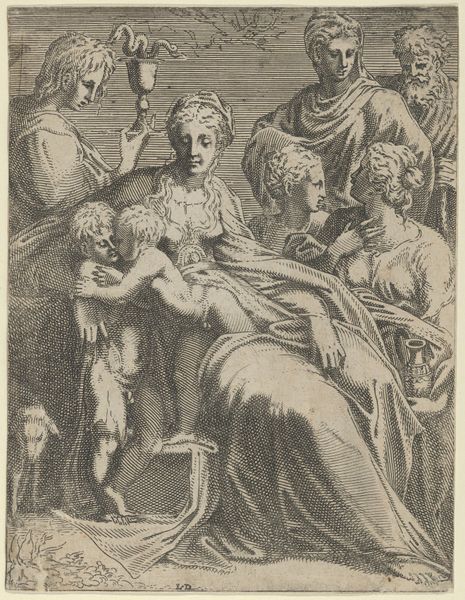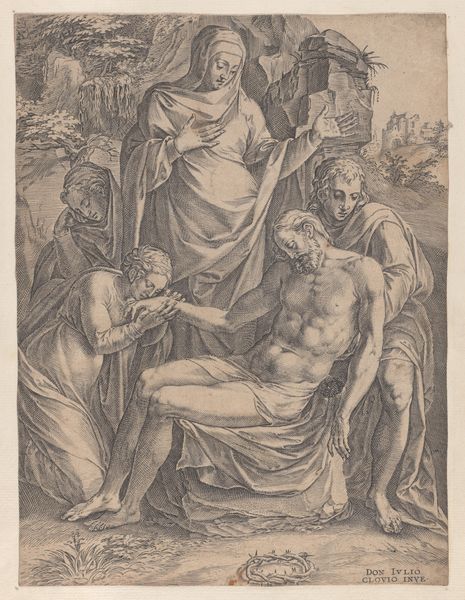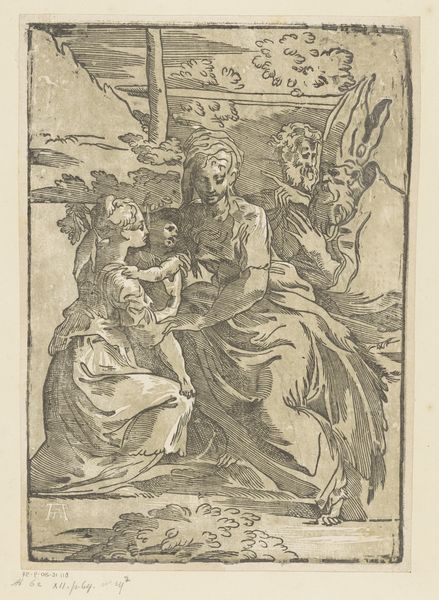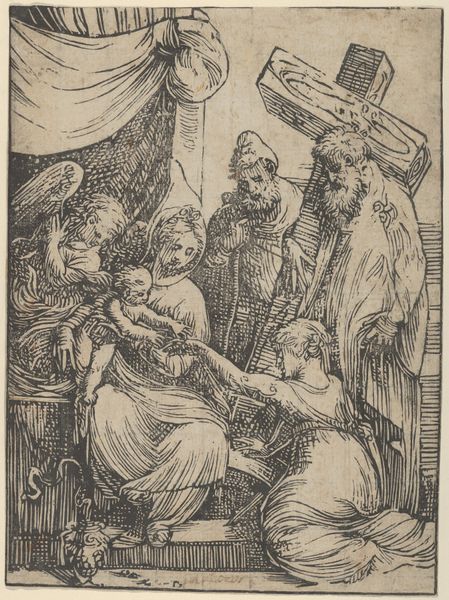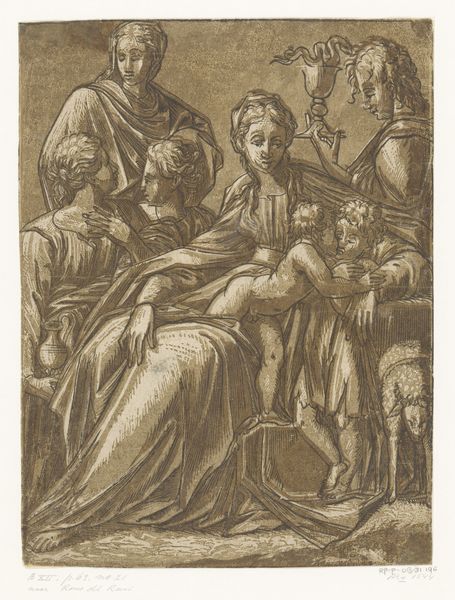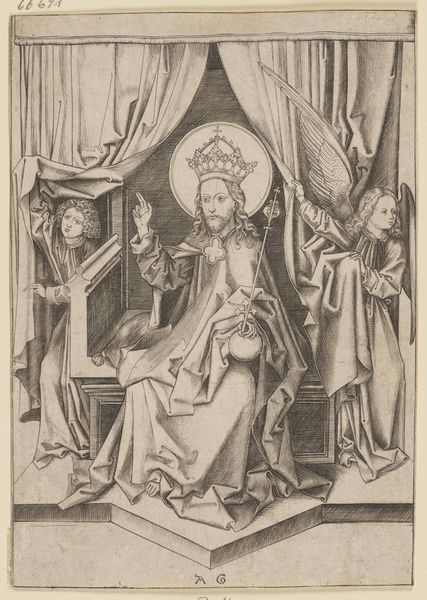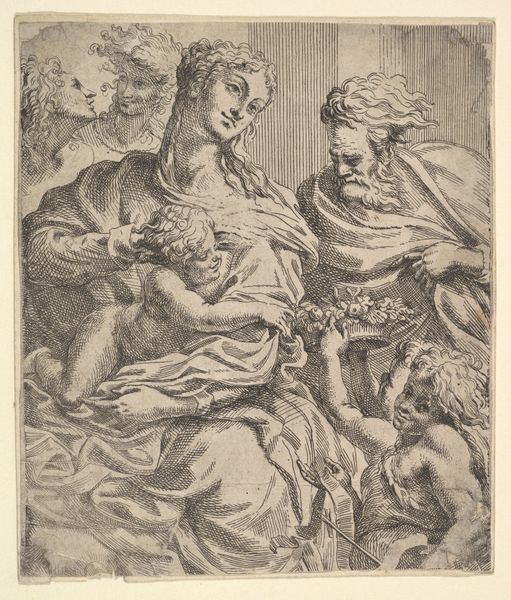
drawing, print, engraving
#
portrait
#
drawing
#
medieval
# print
#
figuration
#
jesus-christ
#
german
#
12_15th-century
#
history-painting
#
northern-renaissance
#
engraving
Copyright: Public Domain
Editor: This is a 15th-century engraving titled "Saint Veronica," made sometime between 1460 and 1467 by an anonymous German artist. What immediately strikes me is the direct, almost confrontational gaze of Christ, supported by Saint Veronica and two angels. What is your take on it? Curator: Well, putting my Historian’s hat on, I'd say this engraving speaks volumes about the role of religious imagery and the power it wielded during the late medieval period. Consider the context: religious prints like this were widely distributed. They provided visual access to sacred stories and figures for a population that was largely illiterate. Editor: So it's about accessibility? Curator: Absolutely! And it’s about controlling the narrative. Think about how the image of Christ is presented. He's not suffering; instead, we see a solemn, powerful figure. This image serves not just to depict the saint but to reaffirm faith and project power, both of the church and of Christ. What does the seeming replication of His visage mean? Editor: I hadn’t thought about it that way, about the intent behind a somewhat reproducible and therefore distributable, artwork. It does make you think about how these images were perceived, shared, and perhaps even used as tools to promote religious and social order. Curator: Precisely. The print acts as a form of cultural propaganda. Recognizing that art often served specific ideological functions is part of what drives my analysis of any artwork. It shifts how one perceives the purpose of image making. Editor: I see. So understanding the artwork’s cultural context truly impacts our appreciation for its artistic and social implications. Curator: Exactly! Considering those influences definitely changes the viewing experience.
Comments
stadelmuseum about 2 years ago
⋮
As it was described in the Legenda aurea, the face of Jesus Christ had impressed itself on the veil of Veronica as a “true image”. Anyone who looked at the relic in Rome—or pictorial depictions of it such as this one—not only saw Christ’s face but was also seen by him. The Master E.S. created this direct reciprocity by portraying Christ with a piercing gaze, detached from the cloth. The Son of God almost seems to leave the world of imagery and enter the believers’ reality.
Join the conversation
Join millions of artists and users on Artera today and experience the ultimate creative platform.
